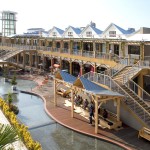Winter Solstice and Hot Bath
December 22nd is the winter solstice (Touji / 冬至 in Japanese) this year (2021).
On this day, the day time is the shortest and the night is the longest in the year in the northern hemisphere.
In Japan, people say if you have a hot bath scented with yuzu (an aromatic citron), and eat pumpkins, you won’t catch a cold.

(Photo Yuzu)
Winter Solstice and Food in Japan
Is pumpkin the only food For touji (冬至 / The Winter Solstice)?

The answer is No.
People say that foods that have “n(ん)” in its name make you lucky!
It is because “n” is the last character in the hiragana order. Since it is the end of hiragana, people gave the same meaning as the day of “touji (the winter solstice).
So, ninjin (carrot), daikon (Japanese white radish), udon (thick white noodles), ginnan (ginkgo nut) and …any food which has “n” in its name are supposed to be lucky food to eat on this day!

(Photo: Ginkgo nut)
Benefits of Food with “n”
Eating these foods is not only to be superstitious, but it is also to take nourishment such as vitamins and carotene for the season when a lot of flu is going around.
People used to eat these vegetables for prevention against the flu and cold.
Depending on the region, people eat konnyaku (a gelatinous food made from devil’s-tongue starch) on this day. It is called “suna-oroshi” which means cleaning dirt or sand out of the digestive system.
Konyaku is well known as good for the digestive system, and people used to eat it on the new year’s eve, the day before the calendrical beginning of spring or after year-end house cleaning. Because of these customs, it seems people started to eat it on Touji (The Winter Solstice), too.

(Photo: Konnyaku)
These days few people take notice of annual functions, but if you look into the reasons and customs, you would be amazed at how much knowledge people in old days had, and how reasonable and wisely they practiced their knowledge through annual functions.
Category : 24 Divisions of The Solar Year , text @en
Tag : 24 divisions of the solar year , 24sekki , corona virus , COVID-19 , COVID19 , Emergency , Japanese culture , season , tanabata , The coronavirus , 日本の文化


























